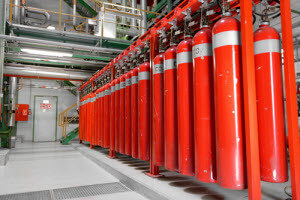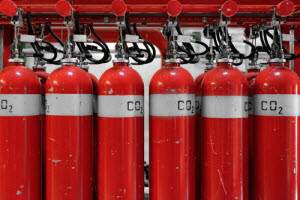How the Stroop Effect Can Create Potential Gas Cylinder Disasters
At a filling plant, it’s important for operations to run smoothly because mix-ups could lead to disaster. It’s also important for operations to be efficient wherever possible and to establish a time- and money-saving system that will allow the plant to achieve this.
 It’s crucial that gas cylinders are always labeled properly and not mixed up. Cylinders containing specific gases can’t be mixed up because this could result in disaster. For example, in hospitals, the carbon dioxide and oxygen cylinders can’t be mixed up because a patient inhaling carbon dioxide instead of oxygen is very harmful to the body.
It’s crucial that gas cylinders are always labeled properly and not mixed up. Cylinders containing specific gases can’t be mixed up because this could result in disaster. For example, in hospitals, the carbon dioxide and oxygen cylinders can’t be mixed up because a patient inhaling carbon dioxide instead of oxygen is very harmful to the body.
For this reason, it’s critical that cylinders are properly labeled and confusion avoided at all costs.
Learn more about the best cylinder-labeling methods, what to avoid, and what could be the most beneficial for your filling plant.
What Is the Stroop Effect?
The Stroop effect can affect gas cylinders, or any labeling system for cylinders or other parts of a filling plant. It’s a psychological demonstration of interference in reaction time and finds that naming colors that are written in that same colored ink is easier than naming colors written in a different colored ink.
How Is the Stroop Effect Dangerous?
 The VA National Center for Patient Safety published the Oxygen (Compressed Gas) Cylinder Hazard Summary that details, if products aren’t completely clear, there’s a potential for disaster. Areas of vulnerabilities include fire, carbon dioxide and oxygen mix-ups, confusion about how much oxygen a cylinder contains, and a cylinder becoming a hazard and being turned into a missile.
The VA National Center for Patient Safety published the Oxygen (Compressed Gas) Cylinder Hazard Summary that details, if products aren’t completely clear, there’s a potential for disaster. Areas of vulnerabilities include fire, carbon dioxide and oxygen mix-ups, confusion about how much oxygen a cylinder contains, and a cylinder becoming a hazard and being turned into a missile.
Within a plant or facility, the staff understands what a cylinder contains from looking at its color. However, the summary states that this could be misleading or misunderstood. A cylinder’s label states what’s in the cylinder and should be read instead of the staff identifying it by color. This could cause disastrous mix-ups.
The summary explains that “color-coding may be misleading and is not ideal for use in identifying medical gases. NCPS will work with CGA and FDA to determine optimal labeling without use of color for coding on cylinders.”
How to Improve Clear Labeling Systems
One way to improve labeling systems is for the cylinder label to be large. That way, it can be easily read and understood and subsequently delivered to the appropriate place. The label should be the only way the cylinder is identified, not by color or storage location. If the label is rubbed off, the cylinder should not be used.
Understanding the appropriate ways to label and identify cylinders can reduce the number of disasters that can occur from cylinder mix-ups.
CPV Manufacturing administers products that are high quality and top notch and are used throughout the oil and gas industry. Their innovative designs are fundamental in the functions of gas-filling stations and plants, which can improve operations. Click here to contact CPV.

